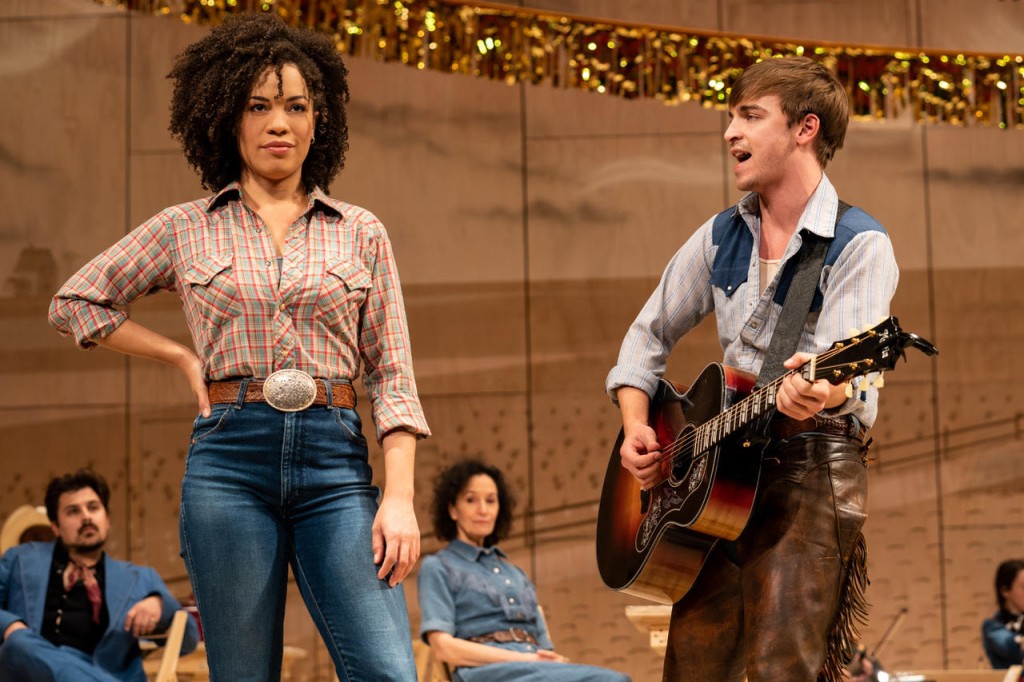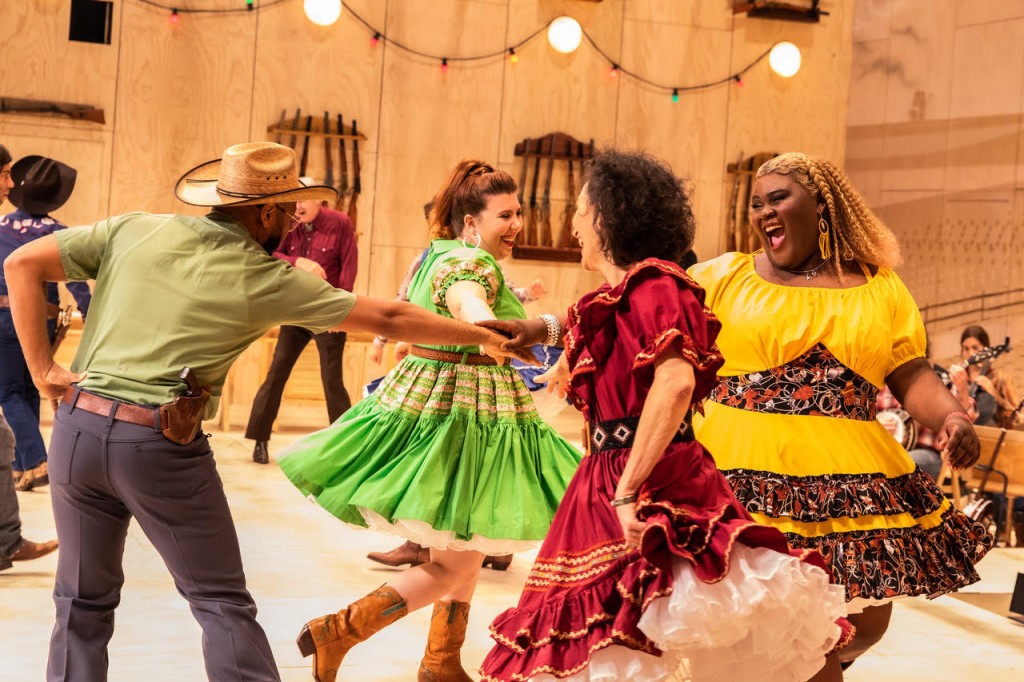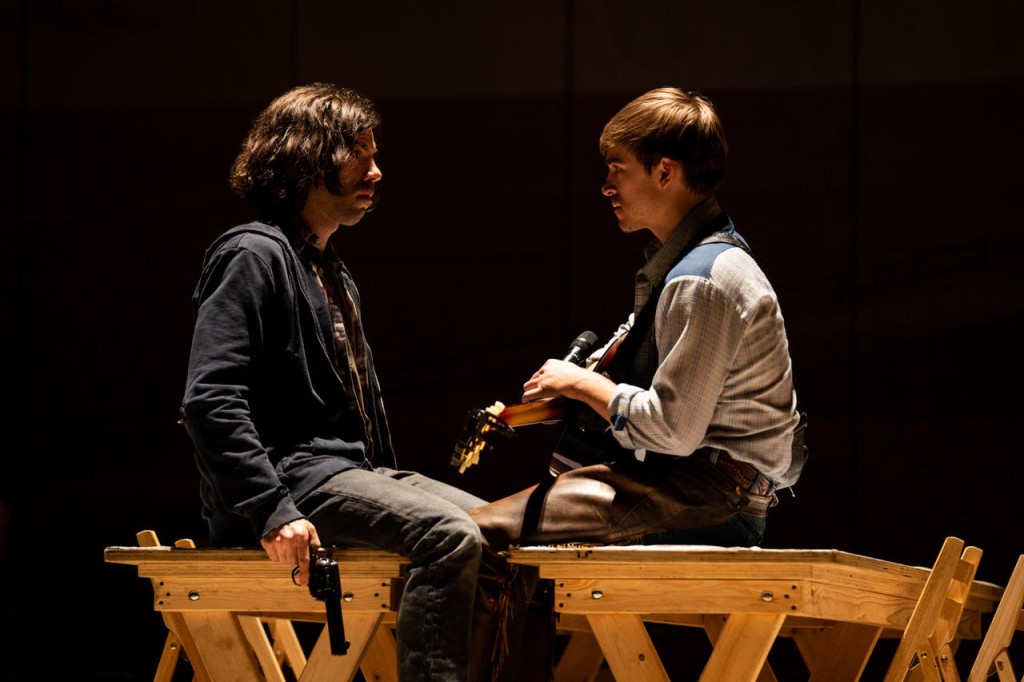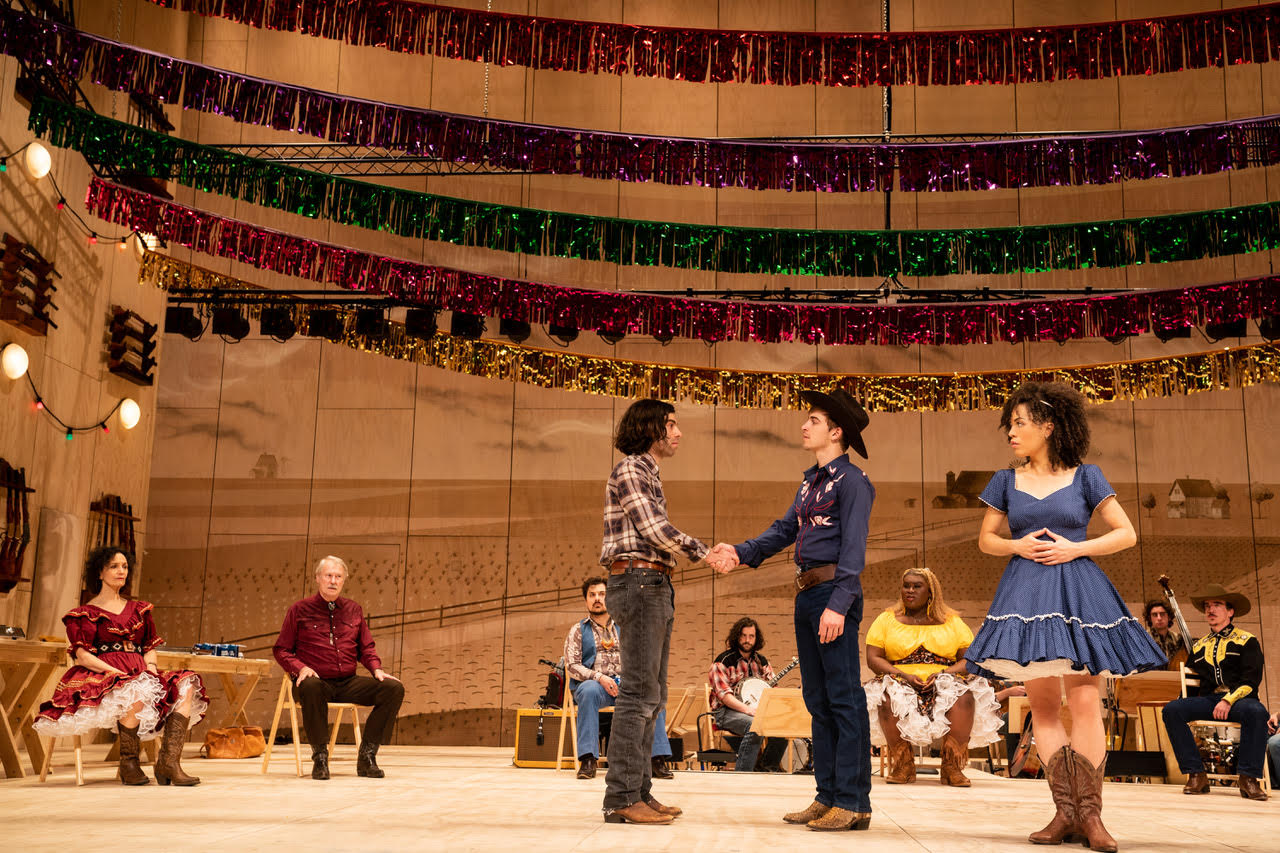
Now don’t get me wrong. I encourage creativity and thinking of ways to present a classic in an unconventional manner. What comes to mind is the Shakespeare in the Park version of “The Taming of the Shrew” set in the Old West starring Morgan Freeman and Tracy Ullman. Ethan Hawke did a film version of “Hamlet” set in corporate America, Anne Bogart directed a production of “South Pacific” at NYU, which was set in a military hospital, and “Measure for Measure,” set in feudal Japan. The reimagined version of OKLAHOMA! directed by Daniel Fish, received a total of eight Tony nominations, winning for Best Revival of a Musical. That award-winning version was clearly not onstage opening night at the Ahmanson Theatre. What was on stage was an amateurish production one would expect in middle school.

Before I launch into my review, for those of you who don’t know the history of the 1943 Rogers & Hammerstein’s OKLAHOMA!, it is regarded as a timeless piece of musical Americana and represents the golden era of Hollywood musicals, paving the way for modern musicals. I have no objection to updating this iconic masterpiece to reflect the changing look of our society with different ethnic backgrounds, sexual preferences, religions, etc. But, if you’re going to tamper with this play, you’d better have an outstanding cast to pull it off. That is the first glaring error of this production as most of the actors never rose above line readings nor did any real acting take place – that is the actors connecting with each other rather than sitting in their chairs waiting for a cue, reciting lines, and yes, sitting back down again. The storyline is simple. It is the tale of farm girl Laurey Williams (Sasha Hutchings) and her courtship by two rival suitors, cowboy Curly McLain (Sean Grandillo) and the sinister farm hand Jud Fry played by Christopher Bannow. It is told against the backdrop of competing lovers, hostilities between the farmers and cowhands, and Oklahoma’s impending statehood.

When I first entered the theatre, what greeted me were garish streamers hanging from the ceiling and a bunch of tables strewn about the stage. Without insulting any organization, it looked like a community hall, but not in a positive way. On the upstage wall, was a suggestion of the arid prairie with two little houses way in the background – so far back it was difficult to even make out what they were. That was Laura Jellinek unimaginative set design. I already had an uneasy feeling, but given the rave reviews of the New York production, I was still hopeful. Regarding the dance numbers, although there was a hint of Agnes Di Mille’s iconic choreography in “The Farmer and the Cowman, ” most of John Heginbotham’s choregraphy was far from anything that could be called Broadway caliber. The execution was ragged with some of the dancers actually losing their balance after a spin. The dream ballet sequence at the top of Act II, danced by Jordan Wynn, was tedious and pointless, slowing down the beginning of the act .

At the top of Act 1, Curly sings the opening number – “Oh What a Beautiful Morning.” It was painfully draggy and only picked up when the rest of the ensemble joined in. His emotional range went from A to A and his stage presence did not leap over the “footlights,” as his acting more cinematic than theatrical. Sasha Hutchings’ as Laurey delivered an uneven performance, with some of her singing underpitched and her dancing uncoordinated as were almost all the dance sequences. The role of Ado Annie was played by Sis, a trans woman which, if it had worked, would have been quite revolutionary. However, no matter what your sexual preference is, the same acting standards still apply, beginning with a believable characterization, no gratuitous mugging, and no pandering to the audience for laughs. Being loud and bombastic does not a character make. Her rendition of “I Can’t Say No” was pushed and sometimes underpitched. Sis’ character is looking for a husband and appears to have two suitors: the peddler Ali Hakim, well played by Benj Mirman, is a cad who likes to play the field and marriage is definitely not on his mind. The other potential husband is Will Parker, played by Hennessy Winkler. He is a simple man but is desperately in love with Annie Ado. Barbara Walsh as Aunt Eller gives an understated performance, which seldom rose above line readings. As far as the storyline, she owns the farm which Laurey helps her manage. The actor who delivers the only believable characterization and the strongest, organic performance is Christopher Bannow as the scary villain Jud Fry, a farmhand who works for Aunt Eller and is smitten with Laurey. His performance was fully actualized, steeped in a moment-too-moment reality, anchored in the character’s motivation.
What should have been a riveting confrontation between Jud and Curly, was erased by the director’s choice to blacken the stage and present the dialogue as a voiceover. It brought what little action there was to a screeching halt. The director employed that same device one more time and it was equally ineffective. I have to assume that Scott Zielinski’s unimaginative light design was an unsuccessful collaboration between he and director Fish. Some of the iconic songs included, “The Surry with the Fringe on Top, “Kansas City,” I Cain’t Say No” “Many a New Day,” “People Will Say We’re in Love,” “Poor Jud is Daid,” “Out of My Dreams,” “The Farmer and the Cowman,” and “All Er Nuthin”.
The person who greenlighted this production must have seen the award-winning version as whatever went on in New York, stayed in New York and never made it to the Ahmanson stage.
‘OKLAHOMA!
Ahmanson Theatre
135 N. Grand Avenue
Los Angeles, CA 90012
Run:
Tuesdays-Fridays: 8:00pm
Saturdays: 2:00 pm & 8:00 pm
Sundays: 1:00 pm, & 6:30 pm
Closing: Sunday, October 16, 2022
Running Time: 2 hours, 45 minutes including one intermission
Tickets: $35 – $150
Reservations:
www.centertheatregroup.org
(213) 972-4400













